|
Whenever your "translate" rock 'n roll lyrics, you run the chance of being labeled a "kook". Whether it be Charles Manson with his impending Helter Skelter race war predictions or Michael Fairchild's bizarre telling of Jimi Hendrix's "predictions" of a forthcoming asteroid collision with earth (from his fact-bending ROCK PROPHECY book) - there are plenty of "way out there" interpretations of rock lyrics. So when I started reading THE GIFT OF GABE, I was thoroughly prepared for this "kook" factor. But guess what? I was not only relieved that this fictional book was not another in the series of dire apocalyptic predictions, but was completely taken by surprise. Brian Joseph manages to put a unique and totally entertaining spin on two of my favorite topics: rock 'n roll and spirituality. And being a total Beatles freak since 1975, I was also fascinated by the interpretations of Beatles lyrics in the book. Especially after having read about every book imaginable on Beatles song analysis. The lyrical analysis is not in the guise of dire predictions, but rather an eye-opening look at life...or at least another way of looking at life.
The story itself involves a chance meeting between the author and Gabe that develops into a friendship/learning experience. At first Gabe appears to be just an eccentric farmer, but the author soon finds him to be a very educated man with a keen sense of philosophical awareness. Gabe opens the mind of the author with songs by The Beatles, Jimi Hendrix, and a few others. He ties his interpretations of these lyrics to philosophical and spiritual books. This is a novel approach - since the books are mentioned by name and author, you get a built-in checklist for further study on any of the topics that interest you. At several points in the book, Gabe gives historically correct quotes from the Beatles, and one such quote, by Lennon, was especially relevant to the book: "Lennon said that a lot of his music came to him and that he was a channel who transcribed like a medium"...and "that he wrote lyrics that he didn't understand the meaning of until later."
Beatles fans especially (but not exclusively) will enjoy THE GIFT OF GABE as it opens a new door into the perception of "What Is". And like any good book, you discover new meanings upon each re-read.
I really miss the days of the vinyl record album. The smell of the vinyl after you first removed the shrink-wrap is a memory that I still associate with the anticipation of hearing a new album. Then there was the study of the packaging while the record itself played - looking at the images and reading the liner notes. While those 'golden years' of this (now) long lost art form are basically gone, they are not forgotten. Now the artwork for CD's is often secondary and disposable, but once upon a not too long ago the 12" x 12" album cover was truly a "canvas" which portrayed a renaissance of graphics. CLASSIC ALBUM COVERS OF THE 60S-OVER 200 OF THE BEST COVERS OF THE DECADE is a celebration of this art form in glories color and (almost) full size. Covering the entire decade, you see the full development of album cover graphics, which occurred during this decade. It's not a reference book but rather a collection of favorites picked by Storm Thorgerson. Better yet, this book heavily covers the psychedelic years, featuring not only bands that I was familiar with but more obscure bands as well. Some highlights for me (other than the huge assortment of psychedelic relics) included: The Fool's album on Mercury (yep, the same group that milked The Beatles of vast amounts of money for the Apple Boutique); the 'Yellow Submarine'-like graphics for "No Way Out" by the Chocolate Watch Band; the still funny cover for "God Bless Tiny Tim". I was surprised that the 'Sgt. Pepper' parody of the Mothers of Invention "We're Only in it for the Money" wasn't included. This is a great collection of the great-lost art form of vinyl album graphics. While CD's might have replaced vinyl albums as a commodity, this book gives evidence of a time when the packaging was almost as important as the music.
TABOO TUNES: A HISTORY OF BANNED BANDS & CENSORED SONGS documents the tendencies of some groups to try and censor or bands due to "real" or "imagined" (usually the case) transgressions, usually related to sex, drugs or "immorality". But the censorship of music didn't start with the recorded medium - the book points out that censorship has a long and fascinating history. The anti-jazz sentiment is portrayed and I find it strange that the very jazz players who suffered from this censorship did not rally to the aid of rock 'n rollers when it came their turn to feel the heat of censorship. Although the controversy over rock 'n roll lyrics are covered thoroughly, the often-humorous subject of banned artwork is also mentioned. Such is the very amusing 1957 THE FIVE KEYS ON STAGE, who cover showed the five black members of this doo-wop group onstage - but a forefinger was mistaken for a penis and the cover was changed! Of course the "backwards masking" fiasco is explored as well as the notorious PMRC. However, there was one point about the Beatles that I found questionable - the original lyrics to "I Want To Hold You Hand" were stated in the book as supposedly "I Want To Hold Your Thing". In all my years of Beatles research I've never heard this - I'm not saying it's not true - the book reports that the original lyrics are in the archives of London's British Museum. I'd just like to see them for myself. The author also leaves out a couple of sexual references in Beatles songs: only mentioning ONE in "Penny Lane" (where there are MANY more) and failing to mention that the original lyrics to "Day Tripper" were "she's a prick teaser" in place of "she's a big teaser". I've got to say that I find it very ironic that a book about censorship is not totally objective in its presentation of facts, calling country artists such as Toby Keith "misinformed cowboy singers", while at the same time trying to justify the reasons why The Dixie Chicks shit upon their core audience while being baffled that their sales were hurt as a result? This is the only fatal flaw in what should be the book's objectivity in regards to all forms of music, personal preference notwithstanding. Despite this flaw, the book is an excellent overview of how censorship changes and morphs over the years into new ways for those anointed few to try and cram their morals down the throats of the music consumer.
Anthony DeCurtis is a 25+ year veteran rock 'n roll journalist who's work has been in ROLLING STONE, RECORD magazine, THE NEW YORK TIMES, GUITAR WORLD, just to name a few. There is a reason his work is so popular - DeCurtis seems to have a natural affinity in the one-on-one in-person interview. Whether it is musicians (like the various Beatles, Johnny Cash, Billy Joel & Elton John, Keith Richards) or directors (Woody Allen, Al Pacino), he seems to be able to pull out the "relevant" in each of his celebrity interviews. The interview is an "art form" in and of itself, since many of these subjects have obviously been subjected to their share of boring and seemingly endless interviews during their career. But DeCurtis always manages to come away with something interesting, whether the artist is confrontational - like his interview with Van Morrison. In fact, during the "Introduction: The Art of Talk", Anthony DeCurtis gives away many of his secrets to a successful interview, and fledgling journalists everywhere should make this intro required reading. It explains why his interviews remain intelligent AND entertaining.
While previous books about the Mamas & the Papas such as PAPA JOHN by John Phillips and CALIFORNIA DREAMIN' by Michelle Phillips (both 1986) did paint a colorful picture of "Mama Cass Elliot (September 19, 1941 – July 29, 1974), they were both far from the complete story. DREAM A LITTLE DREAM OF ME tells the story of the enigmatic Ellen Naomi Cohen, who transformed herself into one of the most popular icons of the '60s: "Mama" Cass (although she HATED the title "Mama"). The book covers her various "demons", such as failed relationships and especially the issue of her weight. Remember, these were the days before gastric operations (like Carnie Wilson's much publicized surgery). So Cass tried an endless stream of diets, but being a rock star and having people always at your house made it hard, especially since Cass loved to always have food available for guests. Add to this the drug issues of the time (this WAS the '60s). With both endless diets and drug use (amongst which was heroin), you have a recipe for disaster which ultimately ended in her untimely death. Also, the father of her child, Owen is finally revealed...only not by name. Described as "an attractive blond session musician who'd been playing with the group", it probably wouldn't take too much detective work to find out just who the father was. Then there is the Manson connection. Cass was questioned thoroughly for the case, because of her relationship with Pic Dawson and Billy Doyle - who were initially suspects in the case. Plus, Manson and his crew had been frequent visitors to Cass' house to take advantage of her hospitality - just not to the degree that Manson took advantage of Dennis Wilson, fleecing him of around $100,000. I did find a few glaring errors and emissions from the book. First, the 1964 band, The GoldeBriars is not mentioned as an influence on the classic Mamas & Papas sound, although Cass Elliot told Keith Olsen, "We (The Mamas & The Papas) stole the GoldeBriars's sound." The errors in the book were both Beatle-related. The story relates how Denny Doherty was trying to get John Phillips interested in the Beatles in 1965: "Denny played a copy of the "Beatles' latest album, but John took one look at the gory "butcher" cover and dismissed it as 'fucking disgusting'". Sorry, but that album (YESTERDAY AND TODA) did not come out until 1966 and the "butcher" cover was never available for sale (having been pulled by Capitol BEFORE it reached retailers). The other "Beatles-error" is told when the Mamas & Papas finally met the Beatles in 1966. After the meeting, supposedly, "Lennon drove off in his Paisley Rolls-Royce". Lennon didn't have his Rolls-Royce painted psychedelic until 1967, around the time of SGT. PEPPER. However, two myths regarding Cass ARE finally put to rest. First, there is the popular myth that a piece of copper tubing fell on her head in the Virgin Islands when the Mamas & Papas were first forming, changing her voice and finally making her blend with the band. This was a John Phillips story to hide the fact that the image-conscious Phillips didn't want Cass in the band because of her size! The other myth is one of rock 'n roll's biggest ones: that Cass Elliot died while choking on a "ham sandwich". The coroner simply reported the cause of death as heart failure. Curiously, there was no alcohol or drugs found in her system - which contradicts many witnesses who say that Cass had partied for the previous 24 hours and many saw her drinking brandy? So, there is still a mystery involved, but it simply doesn't concert a "ham sandwich"! Also, I didn't previously know that Dougal Butler (Keith Moon's assistant) had walked into the bedroom that morning to get some of Keith's personal items and saw Cass sleeping. Although there are a few errors, these are minor and don't take away from what the book does tell: Finally, the complete story of the "ultimate hippie earth goddess" of the '60s: "Mama" Cass Elliot is told.
One of my favorite forms of rock 'n roll books is the day-by-day format, popularized by Mark Lewisohn's excellent, ground-breaking Beatles books. This time, the subject of the book is the much maligned, unappreciated and often labeled "manufactured" band, The Monkees. In THE MONKEES: THE DAY-BY-DAY STORY OF THE 60S TV POP SENSATION, Andrew Sandoval gives an exhaustive account of this band from their initial formation through the band's official breakup in 1970 (ironically the same year that The Beatles called it quits – although unlike The Monkees, The Beatles never reunited unless you count 'The Threetles' ANTHOLOGY reunion). The sheer volume of facts is astounding, from: recording dates (along with session info), record release dates, filming dates (TV series, the movie HEAD and assorted TV specials and commercials) to personal trivia and facts. Although I am well versed in Monkee-lore (but not to the extent of say, The Beatles), I was surprised by a few facts brought out in the book. For instance, the sheer number of extra tracks recorded by The Monkees in 1966 that ended up on their later albums (even up to the last one). I also didn't know that after the groups successful 'coup' to record ALL of their own music (including instruments), that the band seemed to lose interest in the group mentality and after the HEADQUARTERS album pretty much went back to their original formula in the studio. The pictures, contemporary interview/reviews help complete the picture - this is not only the ultimate Monkees sourcebook, but actually the best telling of the Monkees tale. With THE MONKEES: THE DAY-BY-DAY STORY OF THE 60S TV POP SENSATION, Andrew Sandoval truly lives up to Mark Lewisohn's 'standard of excellence'.
In her book "I Don't Need a Record Deal!" Schwartz defines "Indie" as musical artists making it on their own without being signed to a major record label. This independence musical may be achieved by musician's making their craft pay. "I Don't Need a Record Deal" outlines several methods that musicians can use to make their craft pay. Methods advocated in the book include: writing songs for use in television/movies/ video games, getting corporate sponsorship for your musical endeavor, session work, internet sales, and that old musician's standby: playing cover songs at weddings and bar mitzvahs. The chapters on obtaining corporate sponsorship and writing songs for mass media cleverly display "out of the box" thinking .One could, however, question whether achieving independence from the nasty major labels by playing Blink 182 covers at bar mitzvahs is a case trading one form of dependence for another. If such a suggestion seems horrific to you then this isn't the book for you. "I Don't Need a Record Deal!" also deals with the mental attitude required of musicians wishing to make a living at music without major label backing. Schwartz advocates the virtues of positive thinking combined with straight talk about the hard work required for musical independence to buoy would be independent musicians during the lean times. In fact, a major strength of "I Don't Need a Record Deal" is Schwartz's ability to effortlessly switch the tone of the book from a cheerleader/motivational to beer buddy blunt honesty. Another strong point of this book is the overall message of musician's self-empowerment. Schwartz's bottom line is that it is the musician's responsibility to get off their ass do all those less than fun things required to further ones musical career: booking shows, keeping track of CD/t-shirt sales, putting up flyers, and networking with the "right" people. However distasteful musicians might find it, if they want to go it alone they have to develop the ability to "sell" themselves and their music. The extent to which the information in "I Don't Need a Record Deal!" is useful to a musician will be determined by the willingness of said musician to make the short tem tactical compromises advocated by Schwartz to gain long term financial and musical independence. For musicians brave enough to do something with their career other than playing to the same 20 drunken friends on a Wednesday night "I Don't Need a Record Deal!" is a must read.
LOVE & DEATH reads like a true-life version of any popular police TV drama, such as "Forensic Files". However, this is no mere scandal-novel, as the book methodically and scientifically analyzes the so-called suicide of Kurt Kobain. Topics covered include: the suspicion over the so-called suicide note; basic psychics that are involved in a shotgun suicide case [how the gun is thrown from the impact]; the possible "cover-up" by the police - perhaps "cover-up" is too harsh a word - better to use "bungled investigation". For instance, against police reports the door was not barricaded from the inside and the so-called "locked from the inside" door was a simple push-button lock, easily locked by someone leaving to look as if Kurt locked it. Indisputable toxicology reports, which prove that the amount "taken" by Curt would have immediately, rendered him unconscious - therefore ruling out any self-inflicted suicide. The combination of all of these indicate that this was no simple suicide, but perhaps a murder or murder-for-hire. Finally, the evidence and details of Kurt's impending divorce comes to light - pointing the finger at Courtney and giving her a very clear motive for murder [or murder for hire]. Further displayed is Courtney's "revised" story of Kurt's suicidal tendencies. Also, if Kurt's alleged suicide attempt is true, why was Courtney wearing full make-up, as if she was posing for a photo-op? Perhaps someday we will get to the bottom of this case and discover if Courtney was involved or not. LOVE & DEATH is true-life, investigative crime solving at its very best.
Refreshingly accurate, "Brian Wilson and the Beach Boys-the Complete Guide to their Music" is what all rock 'n roll reference books SHOULD strive for! The book was originally titled, "The Complete Guide to the Music of the Beach Boys", and was issued as a CD-sized book. In 2004, the book was updated with a revised title, "Brian Wilson and the Beach Boys-the Complete Guide to their Music" and a different book size (from a CD-size book to your standard book size). The book lists every Beach Boys album up to 2003 (along with dates, song listings & pertinent facts), as well as all the solo albums by group members (excepting Bruce Johnston). Most importantly, the reviews for each album are HONEST, albeit sometimes brutally honest. But fans of the Beach Boys already know (deep down inside) that they have issued a few lame albums along the way! Plus, I enjoy Andrew G Doe's very subtle humor in some of the reviews. This updated version does not review Brian's 2004 "Getting In Over My Head" or his 2004 version of "Smile", but he does put in a few reviews of the live Smile shows. A superb reference guide and a "must own" Beach Boys book!
The subtitle of KILLING YOURSELF TO LIVE is "85% of a true story". This sets you up for the cross-country journey of Chuck Klosterman to find to discover the true nature of rock 'n roll 'death cults'. Perhaps 'cults' is too strong a word, rather the effect that the deaths of rock stars have on everyday fans. In his travels you are taken to: the Chelsea Hotel where Sid Vicious murdered Nancy Spungen; the site of the Great White fire disaster at a club in West Warwick, Rhode Island; Duane Allman's 1971 motorcycle crash in Macon, Georgia and Berry Oakley's bizarre crash almost one year later at the same place in 1972; the site of Lynryd Skynyrd's plane crash; the infamous intersection of Highways 61 and 49 where Robert Johnson supposedly sold his soul to the devil; Clear Lake, Iowa - the site of the demise of Buddy Holly, the Big Bopper and Ritchie Valens; the apartment were Bob Stinson of the Replacements died; and finally to Seattle and the site of Kurt Kobain's so-called suicide [see my other book review on this subject!]. Unfortunately, he never makes it to the hotel of Gram Parson's demise and subsequent cremation at Joshua Tree. All along the way you get humorous anecdotes about Chuck's views on relationships, his family, rock stars in general and more relationships. Most amusing to me are his views and comments on music: the Kiss solo albums and how they relate to women he's loved. This is not so much a rock 'n roll book that a book about rock 'n roll! But it is a very quick and entertaining read.
|

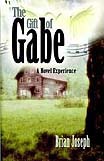 "The Gift of Gabe"
"The Gift of Gabe"
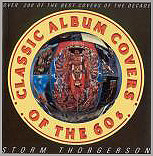 "Classic Album Covers of the 60s-Over 200 of the best covers of the decade"
"Classic Album Covers of the 60s-Over 200 of the best covers of the decade"
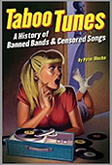 "Taboo Tunes: A History of Banned Bands & Censored Songs"
"Taboo Tunes: A History of Banned Bands & Censored Songs"
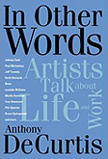 "In Other Words: Artists Talk About Life and Work"
"In Other Words: Artists Talk About Life and Work"
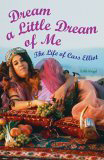 "Dream a Little Dream of Me-The Life of Cass Elliot"
"Dream a Little Dream of Me-The Life of Cass Elliot"
 "The Monkees: The Day-By-Day Story of the 60s TV Pop Sensation"
"The Monkees: The Day-By-Day Story of the 60s TV Pop Sensation"
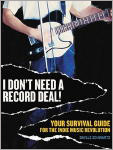 "I Don't Need a Record Deal!: Your Survival Guide For The Indie Music Revolution"
"I Don't Need a Record Deal!: Your Survival Guide For The Indie Music Revolution"
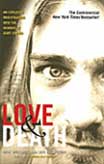 "Love & Death"
"Love & Death"
 "Brian Wilson and the Beach Boys-The Complete Guide to Their Music"
"Brian Wilson and the Beach Boys-The Complete Guide to Their Music"
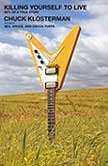 "Killing Yourself To Live"
"Killing Yourself To Live"